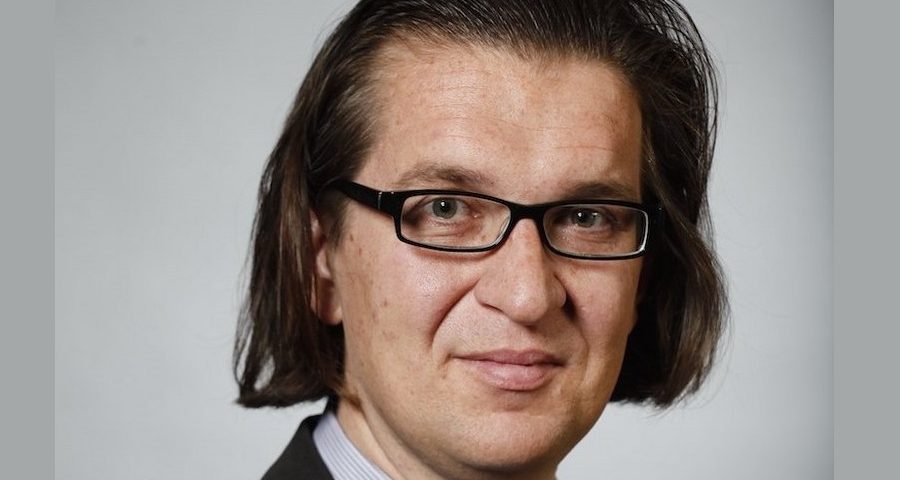
How to motivate and inspire your fundraising team
March 21, 2018
Expert View: Could Blockchain be the future for cross-border giving?
May 16, 2018Cross-border giving is becoming more common. Why is it so important and what are the barriers and opportunities for growth? Fundraising Europe interviews Ludwig Forrest, philanthropy advisor at the King Baudouin Foundation and coordinator of Transnational Giving Europe.
[Fundraising Europe] Why is cross-border giving so important?
[Ludwig Forrest] People need to have the choice and flexibility to give to the good causes they care about, wherever that is in the world; a single marketplace and entirely level playing field for philanthropy. While there is no reason people can’t support charities across domestic borders, it’s not always easy to do so. Certainly not if people want to be able to access the same tax advantages that they can in their home nation. And yet, cross-border giving has really taken off in recent years.
Although it is impossible to estimate the full scale of the cross-border giving market, we can see that it a fast-growing movement within the global philanthropic environment. Appetite for our services has increased significantly, as well as giving to foundations, legacy donations and gifts of property.
With new payment technologies, crowdfunding and new transaction structures to support cross-border philanthropy (both at an individual and foundation level), we are seeing a real increase in people that choose to give beyond their national boundaries. It has been particularly popular with expats who want to donate to causes in their home country, the alumni community and many more. Still, there is far greater potential yet to be achieved.
What are the main areas or opportunities for growth?
Although there is growing appetite from a wide range of audiences, the biggest change is that industry sectors are starting to come together and seek cross-border donation facilities to address a global philanthropic need. We’re seeing great interest in this collaborative approach from the worlds of football, marine conservation and other eco or environmental causes.
This includes philanthropic movements like the Common Goal, which sees footballers worldwide unite behind a pledge to donate at least 1% of their wages to a collective fund. Or Pure Ocean, which is gathering together a community of business leaders and philanthropists to support innovative projects for the preservation of fragile marine ecosystems and biodiversity. These are global issues, with a global audience that need global solutions for donating.
At the other end of the scale, there has been a spate of micro giving initiatives, which enable people to experience life as a philanthropist, often for the first time. Once people find that they enjoy the experience of giving, they want to find other ways to support good causes overseas and the donor net is thrown even wider.
What are the barriers that are preventing growth in the field?
The truth is that cross-border giving can be complex and it is often difficult to know where to start. Because we have free movement of capital within the EU, there should be equal treatment for national or cross-border donations and yet in practice the reality is often very different. Beyond the EU, the situation and rules can vary from country to country, making it even more challenging.
Nationally, the systems aren’t yet in place to make it easy or accessible for people to give in this way. What’s more, many people don’t realise that tax-efficient cross-border giving is an option or indeed that our service exists.
But it’s really just a question of implementing the right framework to make cross-border giving more accessible to everyone. Essentially, we have the legal and fiscal structures, geographical and cultural proximity, as well as a single currency in the Eurozone. We just have to make it easier for people to do this. The more awareness grows, the more this movement will continue to grow.
What is Transnational Giving Europe doing to achieve this?
We have created a secure and tax-effective cross-border giving framework that enables donors – both corporate and individual – to give to charity in any of our member nations and benefit from the same tax incentives as would apply if they supported a cause in their own nation. Currently we have 20 nations on board, with others due to join in the coming weeks. Any charitable organisation can register to be a beneficiary through the scheme, no matter how large or small.
In 2017 alone, over €10 million was donated through our network. This is a 65% increase on figures from the previous year, which goes to show just how much demand is increasing. The average donation is around €1,000-1,500 and it is important to us that we ensure the service is accessible to all those that want to use it.
The service has proved particularly popular in Germany, Belgium, France, Switzerland and the UK, but it’s also growing fast in Italy and Spain, with more and more other European nations now ready to join the network. We’re planning to further expand the network to cover Greece and the Czech Republic, before inviting other non-European nations to take part.
About Ludwig Forrest
Philanthropy Advisor at the King Baudouin Foundation’s Centre for Philanthropy, Ludwig provides strategic advice to donors and beneficiaries about how to find the most effective solutions for their philanthropic goals. As coordinator of Transnational Giving Europe, he works to foster and simplify the European cross-border giving environment. Ludwig is an advocate of the European Foundation Centre, publicist and speaker/moderator at international conferences. He organised the national Philanthropy Day in Brussels and the first international Spring of Philanthropyevent, which attracted more than 1,500 attendees from Belgium and other parts of Europe.




